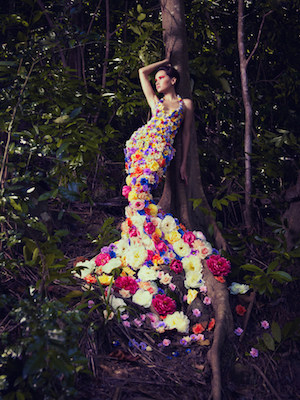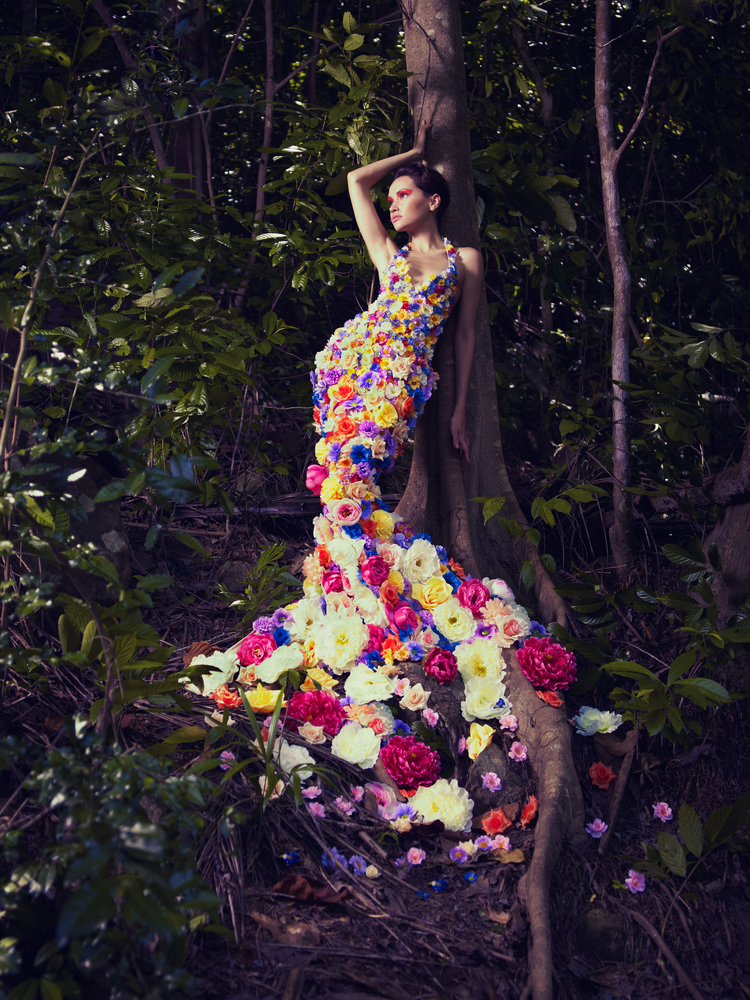Written by Green Diva Mary Wutz
Sustainable fashion does not always mean sustainable manufacturing.
The number of clothing companies on the market touting sustainability are increasing every year, however; “sustainable” doesn’t always mean environmentally friendly.
Listen to this Green Divas Eco Style podcast episode about weaving wellness into fashion… then read on for more.
In the fashion industry the practice of utilizing fibers made from plants can be wonderfully beneficial for the planet. However, the manufacturing processes, where plants are transformed into fabric, are where the sustainability and eco-friendly appeal is tainted.
So what’s different?
The main differences lay in how the plant is processed: mechanically or chemically. Mechanical processing is done mostly by hand with natural enzymes to break the plant fibers down so that they can be spun into yarn. This process is used in the production of linen from flax or hemp and also in the production of fiber from the nettle plant.
Bamboo fabric made from this process is sometimes called bamboo linen, which is not the same bamboo fiber that is used by most brands. The majority of clothing companies utilize chemically processed bamboo, as mechanically processed bamboo is more labor intensive and costly.
Chemically manufactured fibers like bamboo are generally cooked in strong chemical solvents such as sodium hydroxide and carbon disulfide, which have both been linked to serious health problems. Sodium hydroxide is one of the major ingredients of Drano.
These chemicals are not considered sustainable or environmentally friendly, yet many companies still label their clothing as such if they are made from plant fibers.
New manufacturing facilities have begun using other technologies to chemically manufacture bamboo and other plant fibers that are safer and more eco-friendly, but are not yet common in the marketplace.
Who should you trust?
There are independent organic and sustainable certification bodies that exist, but they only insure that the garment is healthy for consumers—not that the manufacturing processes are environmentally friendly and sustainable.
The only way to know if a company is truly sustainable is if they disclose their entire process from plant to runway.
Bottom line…
- Just because a company labels their garments as sustainable doesn’t mean their entire production process is environmentally friendly.
- There are industry specific organizations that issue for sustainability that issue certification but most only ensure that the garment is safe for the consumer to wear not that the manufacturing process is environmentally friendly.
- To ensure clothing is truly “eco-friendly” educate yourself about the individual clothing companies and their production methods.
Do you have a favorite sustainable fashion brand?
Bonus:
Here’s the latest episode of The Green Divas Radio Show for more on green and healthy living…
Listen to the latest Green Divas Radio Show—and other green and healthy living podcasts—daily onGDGDRadio.com (or get the GDGD Radio app)! Green, free radio!
Asst. Ed. Green Diva Grace | Images via Shutterstock
[dynamic-sidebar id=’Custom Widget 2′]
 Mary Wutz consults as an Herbalist, Permaculturist and Food Science Educator. She launched Seam Siren℠ Frequency Clothing, a plant fiber and natural dye brand at Charleston Fashion Week in March of this year. The clothing line is based on the concept of “Medicinal Clothing” inspired by various ancient cultures. Her collection is inspired by the nettle plant, which she sources from a women’s cooperative in the eastern Himalayas. Her garments are then sewn by local seamstresses on the island of Maui from a blend of nettle and organic cotton fiber, and then dyed using wild crafted or organic plants sourced from the farm on which she lives. As a practitioner dedicated to healing, she has spent years using her knowledge to help herself and others heal themselves mentally, emotionally, spiritually, and physically. Check out her Web site, Blog, Instagram, Facebook and Pintrest!
Mary Wutz consults as an Herbalist, Permaculturist and Food Science Educator. She launched Seam Siren℠ Frequency Clothing, a plant fiber and natural dye brand at Charleston Fashion Week in March of this year. The clothing line is based on the concept of “Medicinal Clothing” inspired by various ancient cultures. Her collection is inspired by the nettle plant, which she sources from a women’s cooperative in the eastern Himalayas. Her garments are then sewn by local seamstresses on the island of Maui from a blend of nettle and organic cotton fiber, and then dyed using wild crafted or organic plants sourced from the farm on which she lives. As a practitioner dedicated to healing, she has spent years using her knowledge to help herself and others heal themselves mentally, emotionally, spiritually, and physically. Check out her Web site, Blog, Instagram, Facebook and Pintrest!

Graham
January 18, 2016 at 5:36 pm
I did read about bamboo fiber last week and the chemicals needed to produce the fabric. Most of the bamboo is commercially grown and harvested in China, a country with dubious methods on most things.